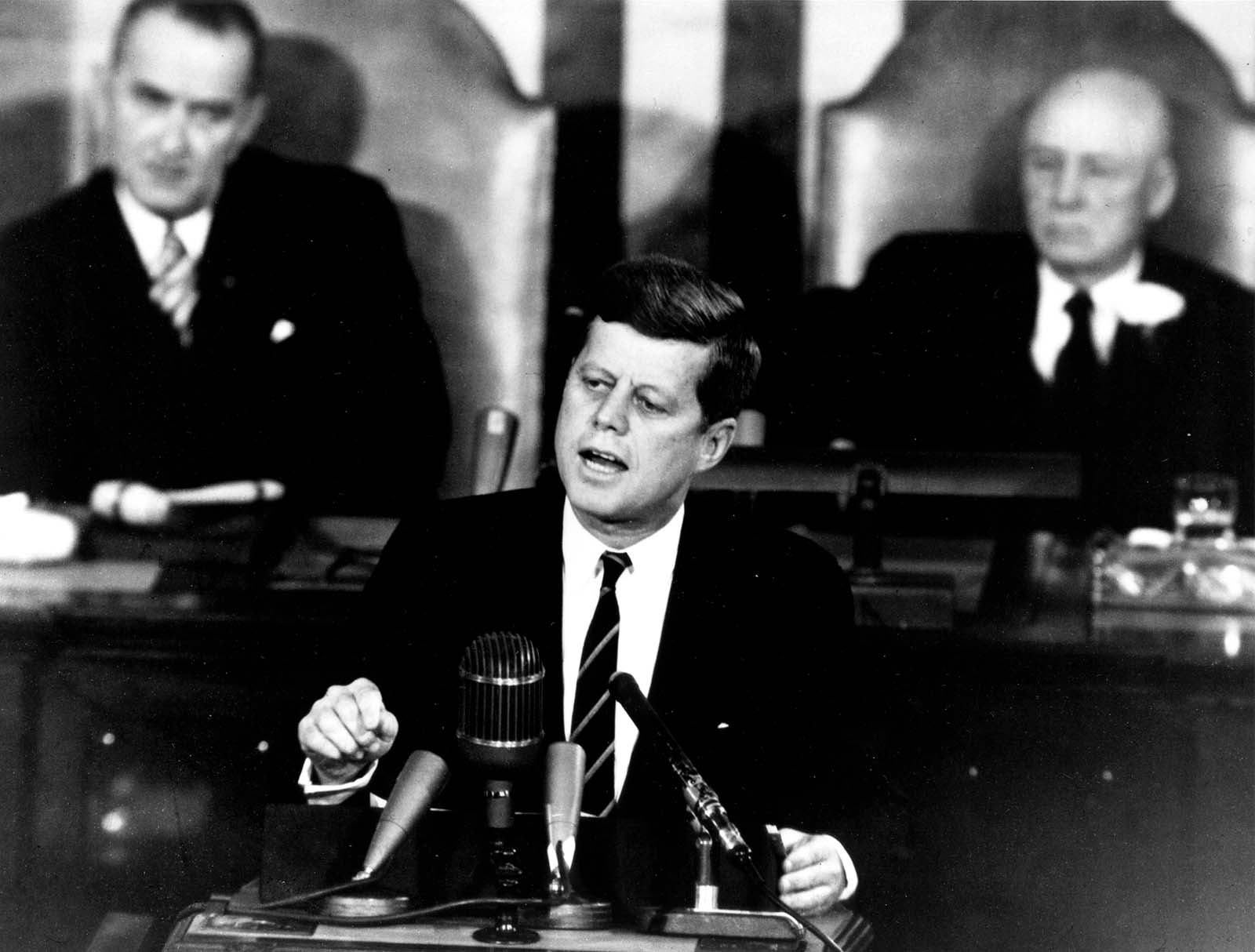An Assessment of the Decision
The President had correctly gauged the mood of the nation. His commitment captured the American imagination and was met with overwhelming support. No one seemed concerned either about the difficulty or about the expense at the time. Congressional debate was perfunctory and NASA found itself literally pressing to expend the funds committed to it during the early 1960s. Like most political decisions, at least in the U.S. experience, the decision to carry out Project Apollo was an effort to deal with an unsatisfactory situation (world perception of Soviet leadership in space and technology). As such Apollo was a remedial action ministering to a variety of political and emotional needs floating in the ether of world opinion. Apollo addressed these problems very well, and was a worthwhile action if measured only in those terms. In announcing Project Apollo Kennedy put the world on notice that the U.S. would not take a back seat to its superpower rival. John Logsdon commented: “By entering the race with such a visible and dramatic commitment, the United States effectively undercut Soviet space spectaculars without doing much except announcing its intention to join the contest.”31 It was an effective symbol, just as Kennedy had intended.

It also gave the U.S. an opportunity to shine. The lunar landing was so far beyond the capabilities of either the United States or the Soviet Union in 1961 that the early lead in space activities taken by the Soviets would not predetermine the outcome. It gave the U.S. a reasonable chance of overtaking the Soviet Union in space activities and recovering a measure of lost status.
Even though Kennedy’s political objectives were essentially achieved with the decision to go to the Moon, there were other aspects of the Apollo commitment that require assessment. Those who wanted to see a vigorous space program, a group led by NASA scientists and engineers, obtained their wish with Kennedy’s announcement. An opening was present to this group in 1961 that had not existed at any time during the Eisenhower Administration, and they made the most of it. They inserted into the overall package supporting Apollo additional programs that they believed would greatly strengthen the scientific and technological return on the investment to go to the Moon. In addition to seeking international prestige, this group proposed an accelerated and integrated national space effort incorporating both scientific and commercial components.
In the end a unique confluence of political necessity, personal commitment and activism, scientific and technological ability, economic prosperity, and public mood made possible the 1961 decision to carry out a forward-looking lunar landing program. What perhaps should be suggested is that a complex web or system of ties between various people, institutions, and interests allowed the Apollo decision.32 It then fell to NASA and other organizations of the Federal Government to accomplish the task set out in a few short paragraphs by President Kennedy.
- Logsdon, “An Apollo Perspective,” p. 115.X
- John Law, “Technology and Heterogeneous Engineering: The Case of Portuguese Expansion,” pp. 111-34; and Donald MacKenzie, “Missile Accuracy: A Case Study in the Social Processes of Technological Change,” pp. 195-222, both in Wiebe E. Bijker, Thomas P. Hughes, and Trevor J. Pinch, eds., The Social Construction of Technological Systems: New Directions in the Sociology and History of Technology (Cambridge, MA: The MIT Press, 1987).X